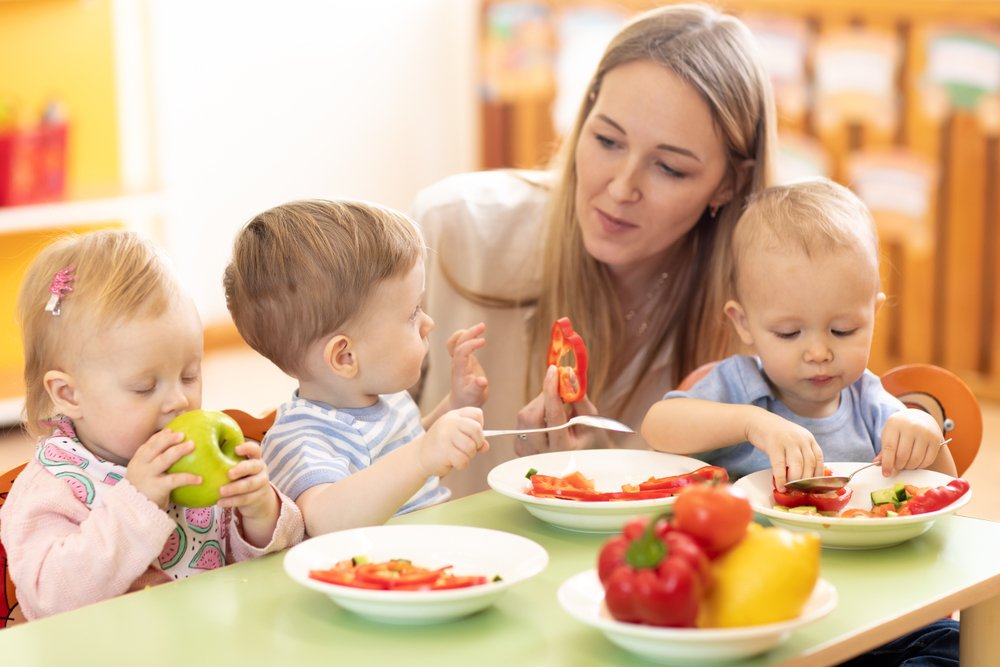Introducing solids to a baby is very exciting. And since we use the same parts of our mouth for eating and for talking, why not work on both of them at the same time! Molly Dresner shares with us some new tips to make meals a more speechy experience.
1. Mirror, mirror
Your little one is going to get all the food cues from you! When it comes to meals, we want to make sure that we start them off on the right foot. It is going to be new, different, a little challenging, and very exciting –so the best thing we can do is create a happy, calm atmosphere! Your tiny friend is going to mirror your emotions and actions during meals; be sure to smile, sit comfortably, giggle, and show them how fun the world of food can be! Eating becomes a learned behavior from 6 months on and is less instinctive. We show them how to open their mouth to accept the spoon, close our lips to keep the food in, chew when the texture thickens up, and so on.
2. Sounds help!
Since our children are going to be mirroring us during meals, I like to use some simple sounds. You can imitate an “ah” when showing them how to open their mouths for the spoon, an “mm” when closing your lips after the bite, an “ooh” when enjoying the bite, etc. Silly sounds are a great way to keep the meal fun, light, and exciting. And remember, we use the same parts of our mouth for eating and for talking so why not work them both out during meals!
3. Create a routine
The easiest way for our kids to learn is by creating a routine. That way, they know what to expect and we can set them up for success. Try to keep things as consistent as possible when starting meals. You should have a designated eating chair, the same types of bibs, the same spoons, and so on. I even like playing the same music in the background! When we keep the environment and routine consistent, our children feel more prepared, calm, and happy!
4. Use foodie language
Mealtimes are a great time to build language and language is an incredible tool to help establish a routine –a win, win! We want to keep our language simple, especially when we are just starting solids with babies. Repetitive, short, simple phrases are best. You can even use little songs that signal the beginning and/or end of meals. I love to label (e.g. ‘spoon,’ ‘bowl,’ ‘bite,’ etc.) and use the same words to describe throughout the meal (e.g. “we’re ready!” “great bite!” “yummy apples,” “full tummy,” “all done,” etc.).
5. Keep it interesting
The best way to create some fun speechy material to work with is to keep the meals interesting! Allow your baby to try fruit and veggies, sweets, sours, and savory flavors, different colored foods, and so on. That way we have a lot to talk about! We also want to make sure we are progressing along with our baby’s readiness in terms of thinner or thicker purees, adding lumps, moving to finger foods, and eventually exploring all textures.

Molly Dresner is a Speech-Language Pathologist based in New York City.
She recently authored The Speech Teacher’s Handbook, an engaging parent guide that includes practical and easy-to-follow tips and activities to help you help your little one!
You can find her on Instagram @thespeechteacher where she posts daily pops of knowledge and connect with her on her site as well as Facebook.








